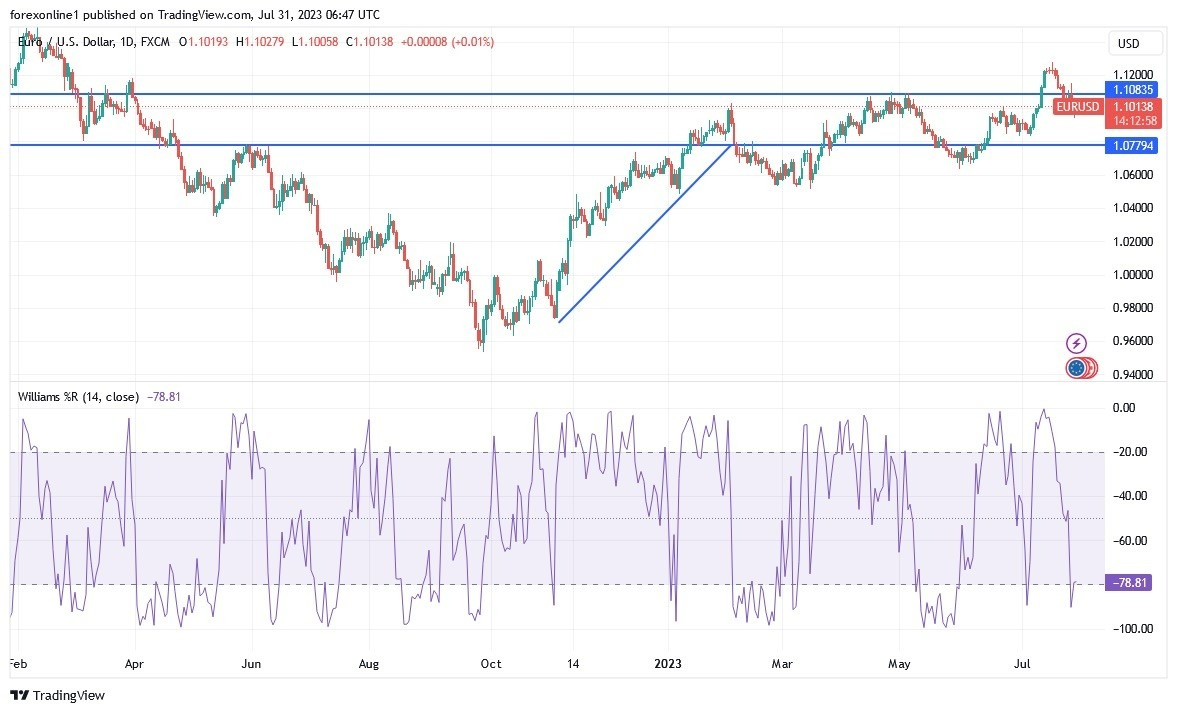- Last week's exciting trading was generally bearish for the performance of the price of the EUR/USD currency pair, which subsequently collapsed towards the support level of 1.0943, its lowest in nearly three weeks.
- It closed the week's trading around the level of 1.1015 after investors and markets absorbed the policy signals of both the Federal Reserve Bank and the European Central Bank last week ultimately prevailing in favor of the US dollar.
- Following the announcement of the US Federal Reserve and with vague statements by Bank Governor Jerome Powell, the EUR/USD currency pair found the opportunity to launch upward towards the resistance level of 1.1150, but soon it was subjected to new downward pressure, breaching the psychological level of 1.1000.
Top Forex Brokers
The euro is now facing a series of European inflation figures that could very well determine whether the European interest rate is likely to be raised again in September. For its part, the European Central Bank said last Thursday that it is no longer on a predetermined path to raise interest rates, and instead prefers that future decisions be based on the form of incoming data.
The most important will be Eurozone inflation for July, due for release on Monday. The market will have a very strong idea of how low today's release will be as Germany, Spain, and France will release inflation figures on Friday. Germany reported a headline inflation rate of 6.2% year-on-year in July, which was in line with the consensus and lower than the June reading of 6.4%. This was after an unchanged 0.3% increase month over month, which was in line with expectations.
Commenting on this, Salomon Fiedler, an economist at Berenberg Bank, said that, “German inflation returned to its downward trend in July. This bodes well for the Eurozone inflation release due on Monday. And if it continues into August, the downtrend could strengthen doves at the ECB who want to keep interest rates on hold in September.”
France earlier released data showing that inflation was flat on a monthly basis in July, below expectations for growth of 0.2%, which would have been unchanged from the June reading. French CPI came in at 4.3% yoy in July, in line with expectations, and just under 4.5% in June. Spain surprised the upside with a monthly reading of 0.1%, which was higher than the -0.4% the market was looking for, albeit significantly lower than the 0.6% in June. The year-on-year reading was at 2.3%, which was higher than the expected 1.6% and higher than 1.9% in June.
Some economists believe that Spain has the fastest transmission of price increases of the major eurozone economies and is therefore a precursor to inflationary dynamics elsewhere. This data is consistent with inflation trending lower and is likely to reinforce expectations that the ECB will not raise interest rates in September. In response, the Euro fell against the Pound throughout the day but recovered a small portion of the significant loss it incurred against the US Dollar.
EUR/USD Technical Outlook
According to the performance on the daily chart below, the price of the EUR/USD currency pair is still moving within the range of a bearish channel. The bears' control over the trend will strengthen if it returns to the support of 1.0950 again, as it was last week. Accordingly, the next psychological support is at 1.0880. On the other hand, for the same time period, the resistance level at 1.1150 will be important for the bulls to start controlling the trend.
I expect the EUR/USD pair to remain under downward pressure until the important US jobs numbers are announced this week.
 Ready to trade our daily Forex forecast? Here’s a list of some of the best online forex trading platforms to check out.
Ready to trade our daily Forex forecast? Here’s a list of some of the best online forex trading platforms to check out.

